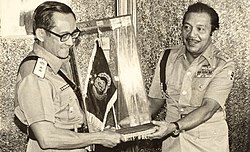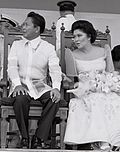History
During the latter years of his second elected term, Marcos conspired with various leaders of the military and Philippine Constabulary. The goal was for Marcos to gain full authoritarian control of the country during his declaration of martial law in 1972. Marcos gave the military leadership powers during martial law, taking over from democratically elected officials and court judges.
The twelve were responsible for many human rights atrocities, although the extent of their responsibility is still being investigated. These atrocities include torture, murder, seizures of property, displacement from homes, and arrest and detention without due process. Some of them fled with Marcos when he and his family left the Philippines in 1986, while Enrile and Ramos were instrumental in the coup against him.
Origin of the name
The origin of the name Rolex 12 came from accounts that each associate was gifted a luxury watch from Marcos himself. A widespread story and some sources state that the brand was Rolex while some contend that they received Omega watches instead. While it is true that the associates received gifts from Marcos, the brands remain unverified, and despite this confusion, the Rolex name became the most common identifier used to refer to these twelve Marcos associates.
This page is based on this
Wikipedia article Text is available under the
CC BY-SA 4.0 license; additional terms may apply.
Images, videos and audio are available under their respective licenses.




